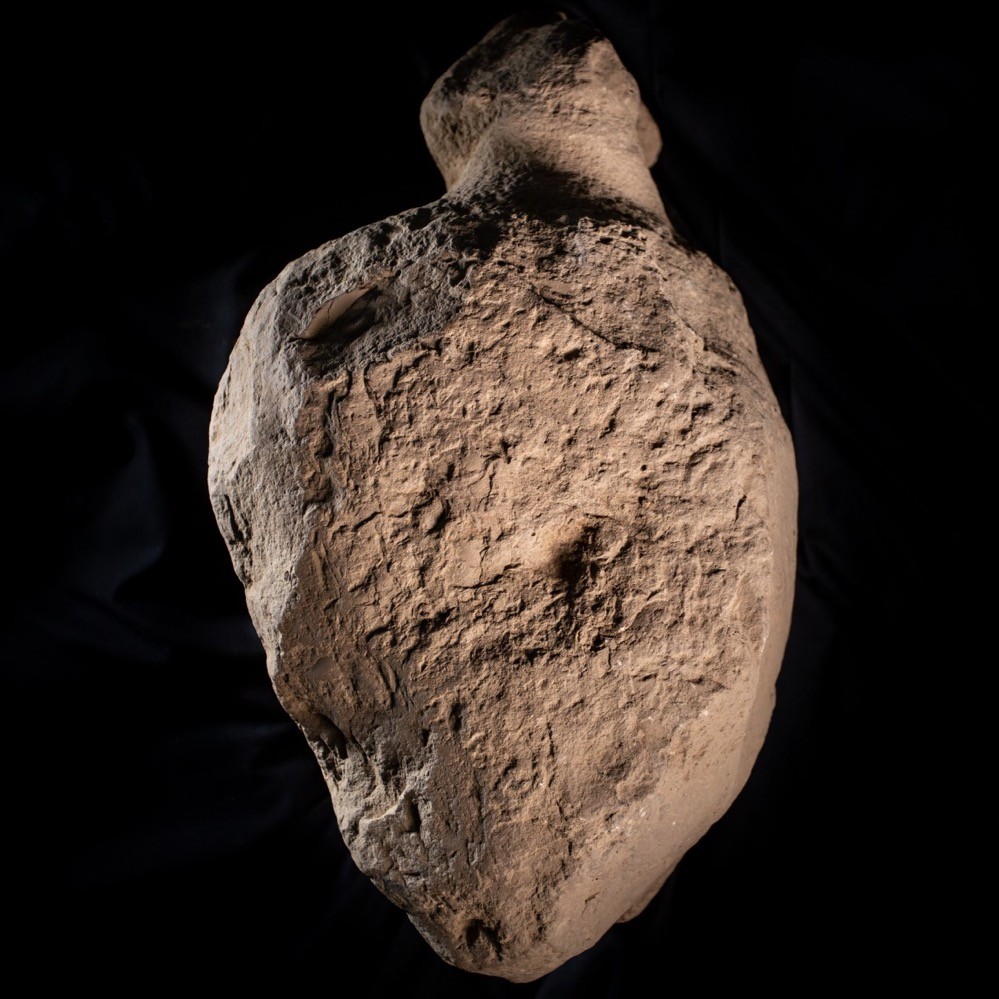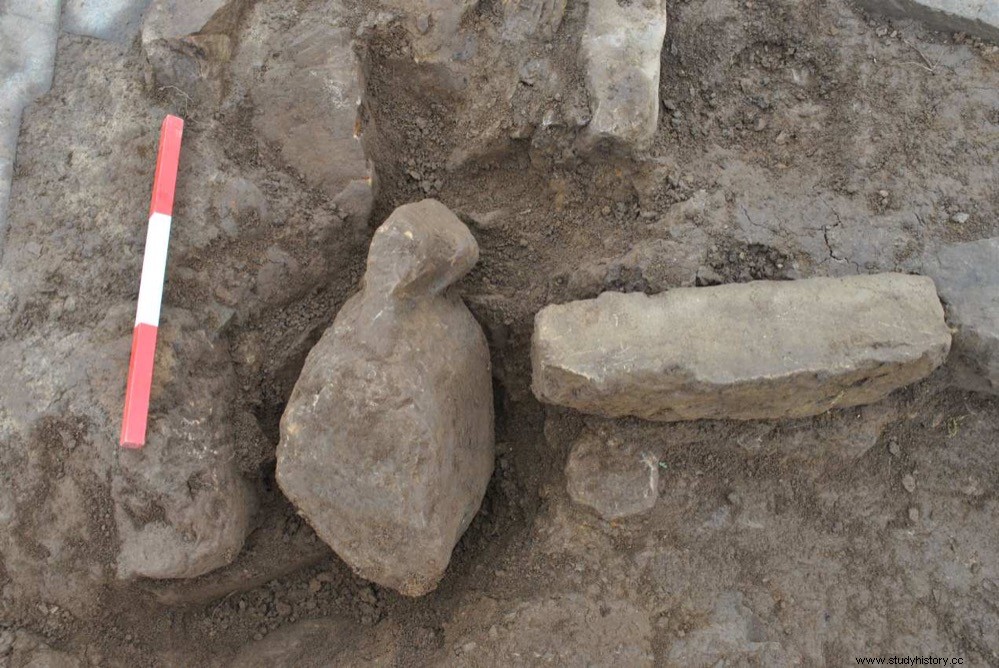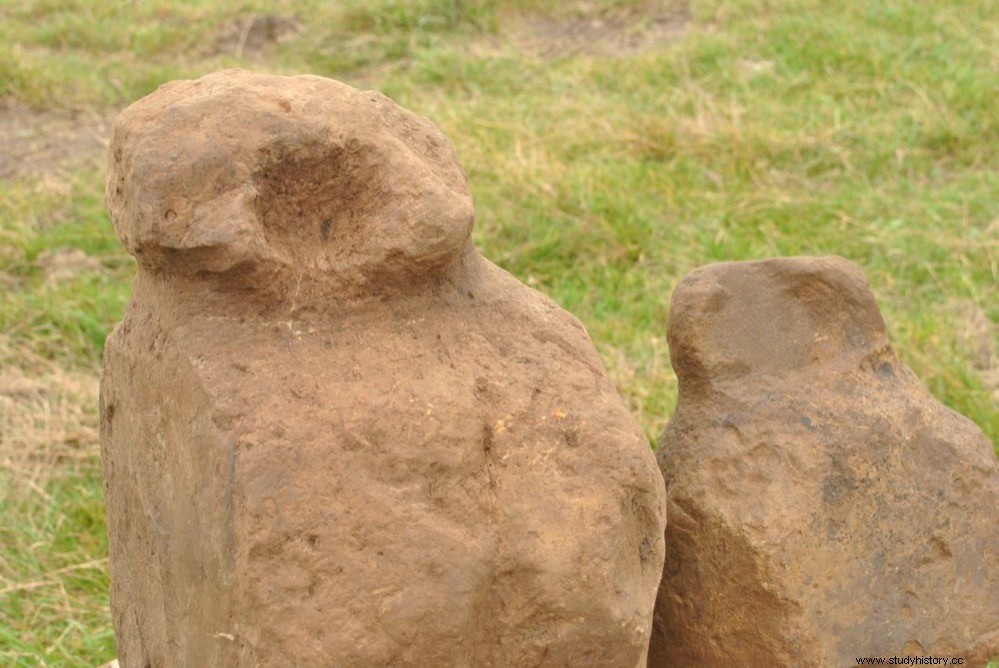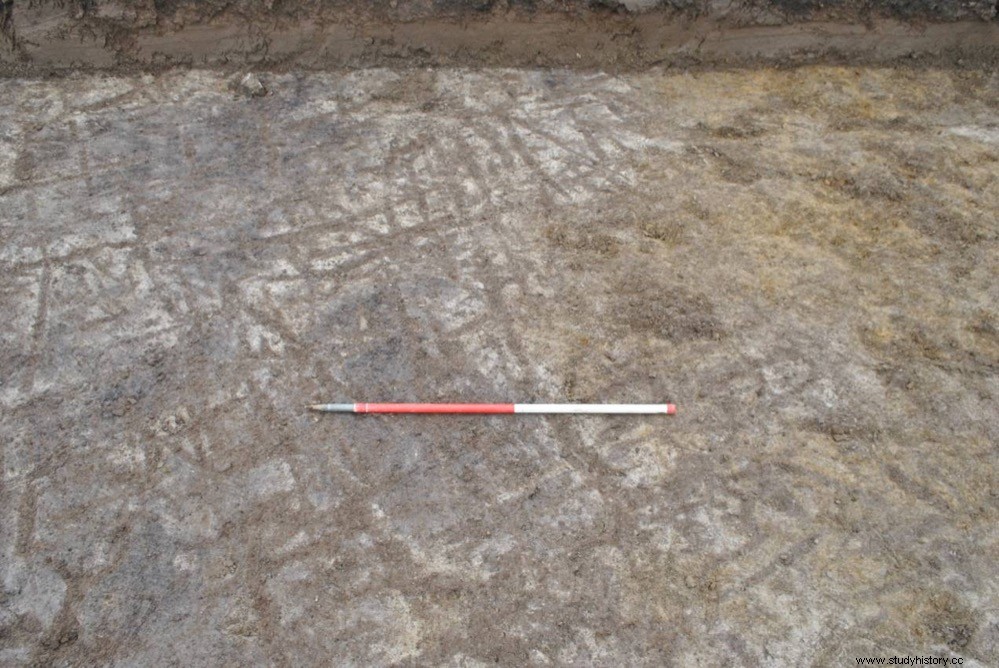A team of archaeologists has discovered a surprising series of nine objects carved in stone, approximately half a meter high, while carrying out exploratory excavations prior to the installation of an electrical substation in the Orkney Islands, an archipelago located 16 kilometers north of the coast. Scottish.

Some of the stone carvings resemble stylized representations of the human form, while others appear to be stones that formed part of the floor of a Bronze Age building, and may have been used to tie ropes to help support ceiling. The discovery was made near the Links of Noltland deposit. , by Grobust Bay on the north coast of Westray in Orkney.

Archaeologists found the carved stones scattered around a hearth within the remains of an enigmatic structure that contained three cists, two hearths, and a partial ring of holes filled with broken stones. Three of the crudely carved figures had been incorporated into the framework of one of the chimneys and into the foundation of the building. Its purpose and how it was used by the locals four thousand years ago remains unknown.
In a first analysis, the researchers believe that the carvings possibly date from around the Late Neolithic or Early Bronze Age, approximately 2000 BC. Identifying the purpose of these stones, and whether they are figures or sculptures, will require a close study of abrasion, wear, and any other markings on these anthropomorphic objects.

According to Professor Colin Richards of the Institute of Archeology at the University of the Highlands and Islands this is a significant find in Orkney and probably north-west Europe. It is very rare to find depictions of people in prehistoric Orkney, and when they are found, they are usually individuals or in very small groups. If it's figures, finding nine figures within one structure is very exciting and together with the other archaeological finds this site has the potential to add to our understanding of Orkney society in prehistory.
The researchers also found direct signs of earth work some four thousand years ago. Long marks cut into the clay subsoil, which were made by stone plows, were found in one of the trenches, providing evidence of prehistoric agriculture on Orkney. The lines intersect each other at various angles, further suggesting that the soil was intensively farmed by these early Orkney farmers.

The survival of these markings, along with the remains of Early Neolithic and Bronze Age settlements, provides insight into the prehistoric use of this site over some two thousand years with people living, farming and burying their dead at the foot of a windswept hillside.
